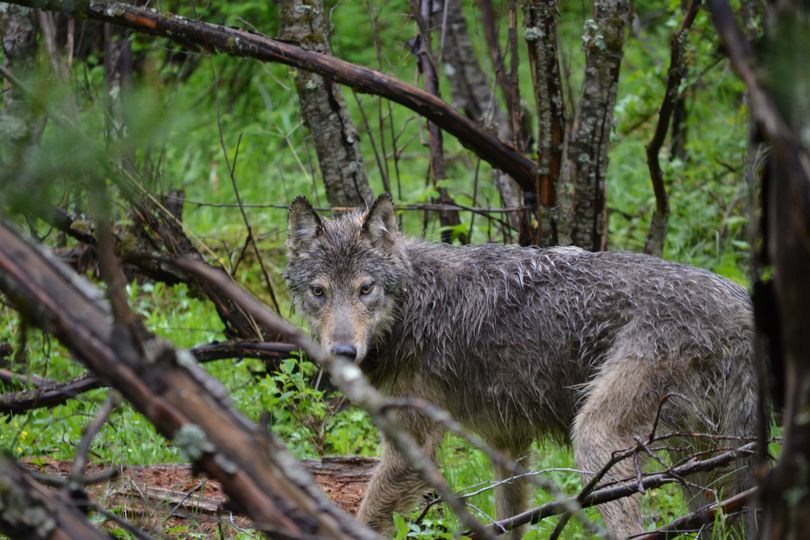Another Washington wolf pack targets livestock

ENDANGERED SPECIES -- A northeastern Washington wolf pack so new it hasn't been formally recognized has been confirmed in a livestock attack in Ferry County, state wildlife officials announced today.
The Profanity Pack, which apparently was documented sometime this year by a biologist working with the Colville Confederated Tribes, has been related to a wolf attack on cattle reported Sept. 12 on a Colville National Forest grazing allotment.
The pack, which doesn't yet show on state wolf recovery maps, was named for its proximity to Profanity Peak, elevation 6,428 feet, along the crest of the Kettle River Range east of Curlew, and north of Sherman Pass.
"Remote cameras show the pack includes at least three adults and three pups," said Nate Pamplin, Washington Fish and Wildlife Department wildlife program director.
"WDFW is coordinating with the Colville Confederated Tribe on camera monitoring and future trapping efforts to place a radio collar on members of the pack."
The Diamond M livestock operation, grazing on a U.S. Forest Service (USFS) allotment, reported finding a wolf-killed cow and calf in the vicinity of the Profanity Peak pack, Pamplin said.
Diamond M Ranch also had problems with wolf attacks mostly on private land in northern Stevens County in 2012. Those attacks affecting 17 cattle, led the state to put helicopter gunners in the air and kill eight members of the Wedge Pack.
"WDFW staff and deputies from the Stevens County and Ferry County sheriff’s offices responded and went to the site on Friday," Pamplin said. "The area was remote, about four miles by trail from the nearest road. WDFW staff confirmed that the cattle had been killed by wolves approximately a week before the necropsy."
The Forest Service grazing allotment has 210 cow-calf pairs, Pamplin said:
The operators indicated that they believe that they have had more depredations than what has been located. Operators also indicated that they are moving the cattle down (to a lower elevation) on the allotment to get to better forage and to initiate the move of cattle toward the area from which they will moved off the range in about a month (these actions were discussed independent of this depredation event).
WDFW staff are completing the depredation investigation report and also reviewing/completing a current checklist of preventive measures that have been used to this point.
WDFW will coordinate with the USFS and the operator to continue discussions on options for avoiding/minimizing further depredations.
The cattle attacks were reported a month after another pack, the Huckleberry Pack, was confirmed in attacks on sheep a rancher was running on a private timber company grazing lease in Stevens County. At least 24 sheep were killed as state officers went in and killed one of the pack's wolves, the alpha female. The 1,800 sheep have been moved to other pasture.
